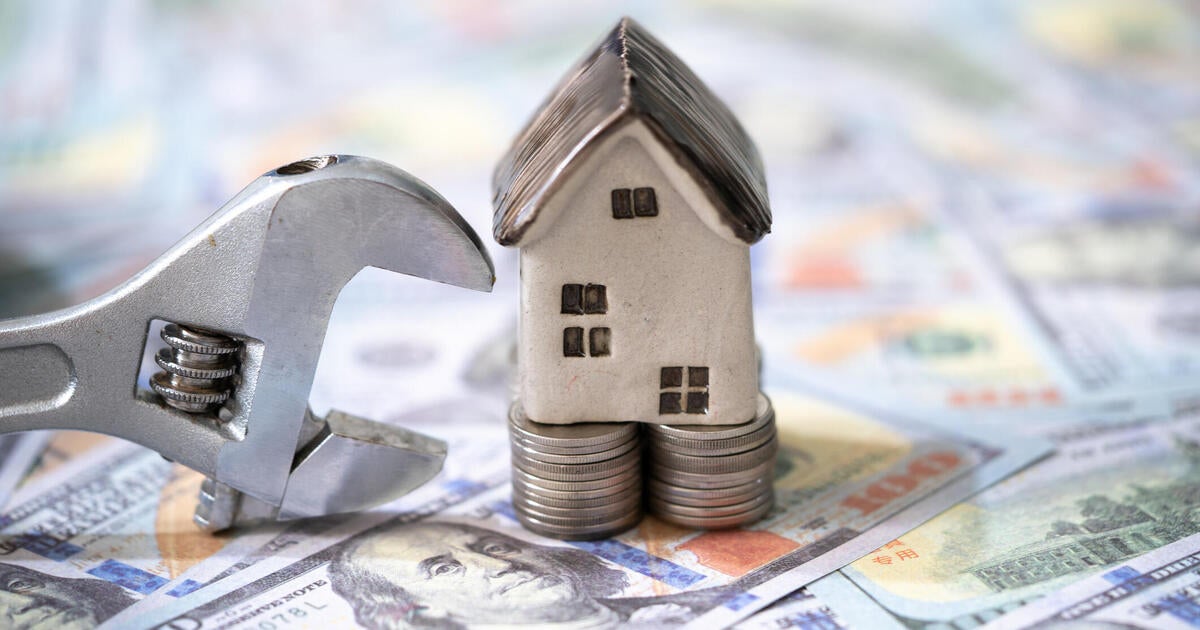We may receive commissions from some links to products on this page. Promotions are subject to availability and retailer terms.

Getty Images
Spring and summer tend to be the most popular times of year for home renovations thanks to the warm weather and long daylight hours. But if you’re planning to renovate your home this spring, the price tag can be pretty hefty, so you’ll need to think about how you’re financing the project.
According to a recent study, nearly two-thirds of homeowners opt to finance their renovations rather than pay out of pocket. The good news is that rising home values over the past several years have increased the equity most homeowners have in their homes, making it easier to pay for home improvement projects with a home equity loan.
But should you use a home equity loan for your spring home renovation? While there are some benefits to using a home equity loan for renovations this spring, there are also some downsides to consider.
Compare today’s best home equity loan rates online now.
Should you use a home equity loan for your spring home renovation?
A home equity loan allows you to tap into your existing home equity to help pay for nearly anything, including home renovations. And, home equity loans and other types of equity financing are particularly well-suited to home improvements that are likely to have a financial payoff, according to Jason Smartt, senior vice president with The Federal Savings Bank.
“First, home renovations can drive a significant increase in the home’s value,” says Smartt. “This is especially true for renovations to kitchens, bathrooms, and roofs,”
Unlike other types of home equity borrowing, a home equity loan offers a fixed lump sum upfront rather than a line of credit that can be borrowed from as necessary. For that reason, this tool may be best suited to projects where the budget is relatively fixed, meaning that you have a good idea of how much you’ll spend and you know you won’t have to borrow more money later. They can also be a smart option for borrowers who want the certainty of a fixed monthly payment over a set number of years.
“If you have worked hard for a “rainy day fund” then I recommend keeping the cash on hand for true emergencies assuming the home equity loan payments are affordable,” says Smartt.
Home equity loan rates are also generally lower than those on unsecured debt since you’re using the home as collateral. Plus, you can deduct the interest paid on your home equity loan, at least through the end of 2025, if you use the funds to “buy, build, or substantially improve” your home, according to the IRS.
Find the right home equity loan for your needs here.
Is spring a good time to take out a home equity loan?
Spring is a popular time for home renovations, but is it a good time to take out a home equity loan? The good news is that it can be. The best time to get a home equity loan isn’t necessarily seasonal. Rather, it’s best to time your financing with your home improvement project.
“There’s no perfect time to take out a home equity loan but there are times when it makes more sense,” says Leon Turkin, a mortgage broker at Turkin Mortgage. “Spring and summer are the most popular times for renovations because the weather is more conducive to construction and outdoor work. Also, many people have more flexibility during these months to manage projects.
Ideally, you want to take out your home equity loan early enough to get a commitment from a contractor. For a spring renovation, this could mean starting to shop for your loan in the winter. You also want to avoid taking out a home equity loan too early, as you could end up making payments on it before the work on your home starts.
“On the financial side, it’s also good to keep an eye on interest rates,” says Turkin. “If interest rates are low, it’s a good time to take out the loan when rates are good and that’s usually at the beginning of the year or when the economy is stable.”
Key considerations for home equity loans
Before taking out a home equity loan, make sure to consider their unique characteristics and requirements. First, home equity loans have similar requirements to mortgages. You’ll typically need good credit, a stable income and a low debt-to-income ratio to qualify.
Additionally, lenders generally have a maximum loan-to-value ratio (LTV). You usually can’t borrow more than 80% of your home’s value, and that’s combined with your mortgage. For example, if you have a home valued at $400,000 and a mortgage balance of $300,000, you may only be able to borrow another $20,000 against your home equity.
Another thing to consider is that home equity loans charge closing costs. You should expect to pay between 2% and 5% of your loan amount when you close on your loan. Home equity loans also use your home as collateral, just like your mortgage does, so if you can’t make your loan payments for any reason, your lender may have the right to foreclose on your home.
“If this gives you pause, you might consider a home improvement loan,” says Omer Reiner, a licensed real estate agent and the owner of the real estate investment company FL Cash Home Buyers. “This type is unsecured, though it generally does carry a higher interest rate.”
Other borrowing options to consider for spring renovations
Home equity loans can be a good option for spring renovations, but they aren’t right for every situation. According to Sarah DeFlorio, vice president of mortgage banking at William Raveis Mortgage, home equity lines of credit (HELOCs) are among the most popular home improvement financing tools — and for good reason.
“HELOC rates are not fixed and adjust based on what the Fed does – although less certain at this time, the expectation is that the Fed will keep rates flat or continue to reduce them so you would be able to take advantage of the lower rates when that happens,” says DeFlorio.
HELOCs may be a good option for projects with uncertain budgets, as the line of credit allows you to borrow what you need initially and then make additional draws later on. For this reason, they’re also well-suited to phased projects.
“Another benefit to a HELOC is the ability to use it as a piggy bank – once you pay down the principal, you are able to borrow the funds again during the 10-year introductory interest-free period,” says DeFlorio.
Another option to consider is a cash-out refinance. This financing option is typically best if interest rates are lower today than they were when you initially took out your mortgage loan. A cash-out refinance involves replacing your entire loan at a new rate, so it’s likely not worth it if you can’t land a better rate than the one you have now.
If you aren’t comfortable using your home as collateral, you may want to consider an unsecured option to pay for your home renovations instead. For example, a personal loan will typically come with a higher interest rate than a home equity loan, but it doesn’t put your home at risk of foreclosure. A credit card offers a similar benefit, but given their sky-high interest rates, this is likely only a good solution for low-cost renovations — or when you can qualify for a 0% APR introductory offer.
The bottom line
As you’re planning your spring home renovations, it’s important to consider how you’ll foot the bill. There are plenty of options on the market, including those that allow you to pull equity from your home at a reasonable interest rate. However, given the unique nature of each home equity financing tool, it’s important to consider your unique situation to determine whether a home equity loan or something else is the best option.










